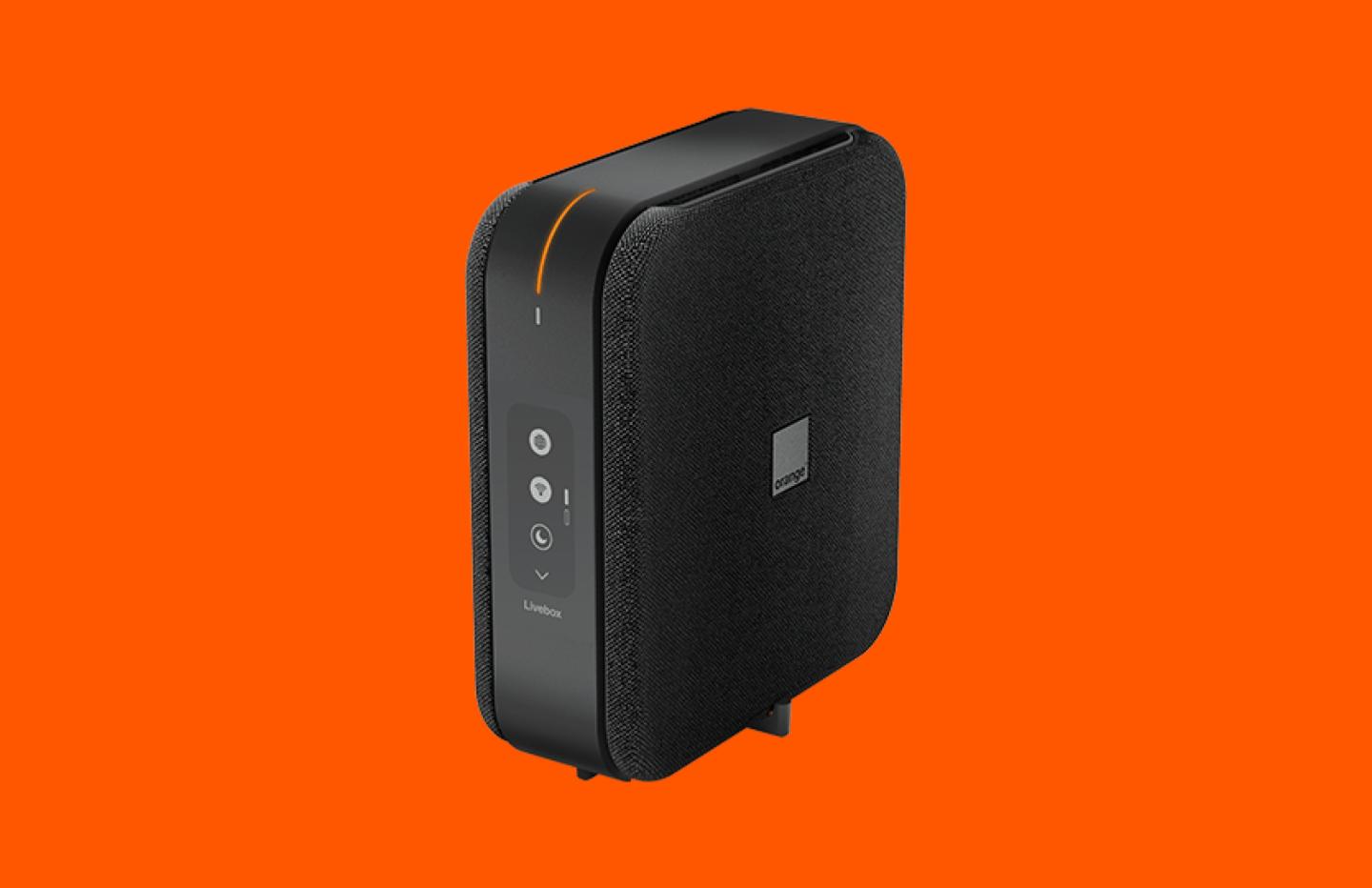Newly arrived in the Livebox Max Fiber offer, the Livebox 7 already replaces the recent sixth iteration with, as a result, some slight innovations. This article lists everything you need to know about this new box: speed, Wi-Fi, features, interface, etc.
Although Orange waited almost three years to move from Livebox 5 to Livebox 6, the historic operator ultimately only took a short year before moving on to the seventh iteration of its famous internet box. Its launch was also carried out discreetly; no doubt the operator judged that this generational change was not worth offering a communication campaign.
Obviously, in such a short period of time, we should not expect a real aesthetic evolution. We can note some adjustments, especially technical, although Orange has also corrected a few elements to bring it up to par with high-end competition, whether at SFR, Free or Bouygues Télécom.
Initially, the Livebox 7 takes the place of the previous one as a router delivered in the Livebox Fiber Max offer, the characteristics of which are:
- Subscription price: €39.99 per month for 6 months, then €57.99 per month
- Equipment provided: Livebox 7, Ultra HD 4K decoder (on request with activation fee of 40 euros), TV stick (on request with activation fee of 10 euros), Wi-Fi 6 repeater (up to three on request with activation fee activation of 10 euros for each), Airbox 20 GB (on request with activation fee of 10 euros)
- Proposed flow rates : Up to 5 Gb/s download and 1 Gb/s upload
- Termination Fee : 50 euros
- Duration of commitment: 12 months
- Communications : Unlimited calls to landlines and mobiles in France, Europe, DOM, USA and Canada
The design of the Livebox 7
The general design of the Livebox 7 differs very little from its big sister and it is once again Sagemcom which took care of the manufacturing of the Box, as has been the case for several generations. We always have the right to this rounded paving stone decorated with a fabric effect side covering and which gives it a certain elegance once placed vertically. A position which is also recommended and encouraged by the operator – via a support provided for this purpose – due to better diffusion of the Wi-Fi signal.
Once again, the visual difference is there, but is not immediately obvious as it depends on the details, in particular by a darker color of the side covering and by the addition of a white diode placed just below the Bright orange line indicating the box is powered on. Judge by yourself :
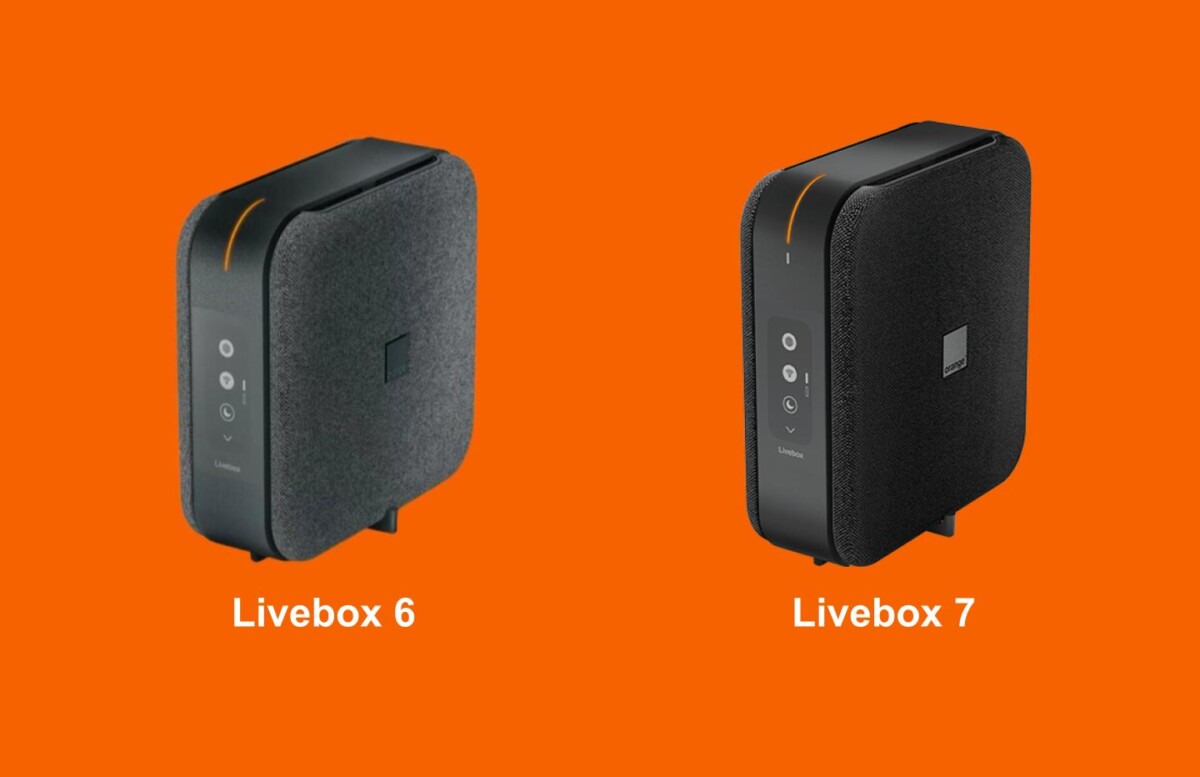
In essence, the only real visual changes are in the details. The Livebox 7 is indeed larger (20.5 cm high compared to 18.3 cm for the Livebox 6), but it retains the same width and depth (respectively 18.3 cm and 8 cm). On the other hand, it is surprisingly much heavier with 1.45 kg on the scale while the Livebox 6 does not exceed 900 g.
Orange has retained its manufacturing entirely from a 100% recycled and recyclable plastic shell, as well as a very reduced power consumption of no more than 8 Wh in standby with all network ports connected and active. A deep sleep mode also deactivates everything with a consumption of only 0.5 Wh.
The Livebox 7 is still equipped with the famous e-ink touch screen (non-backlit) which is purely identical to that of the Livebox 6. This displays basic information such as the network status or the different connection options, including being able to scan a QR code and connect to Wi-Fi.
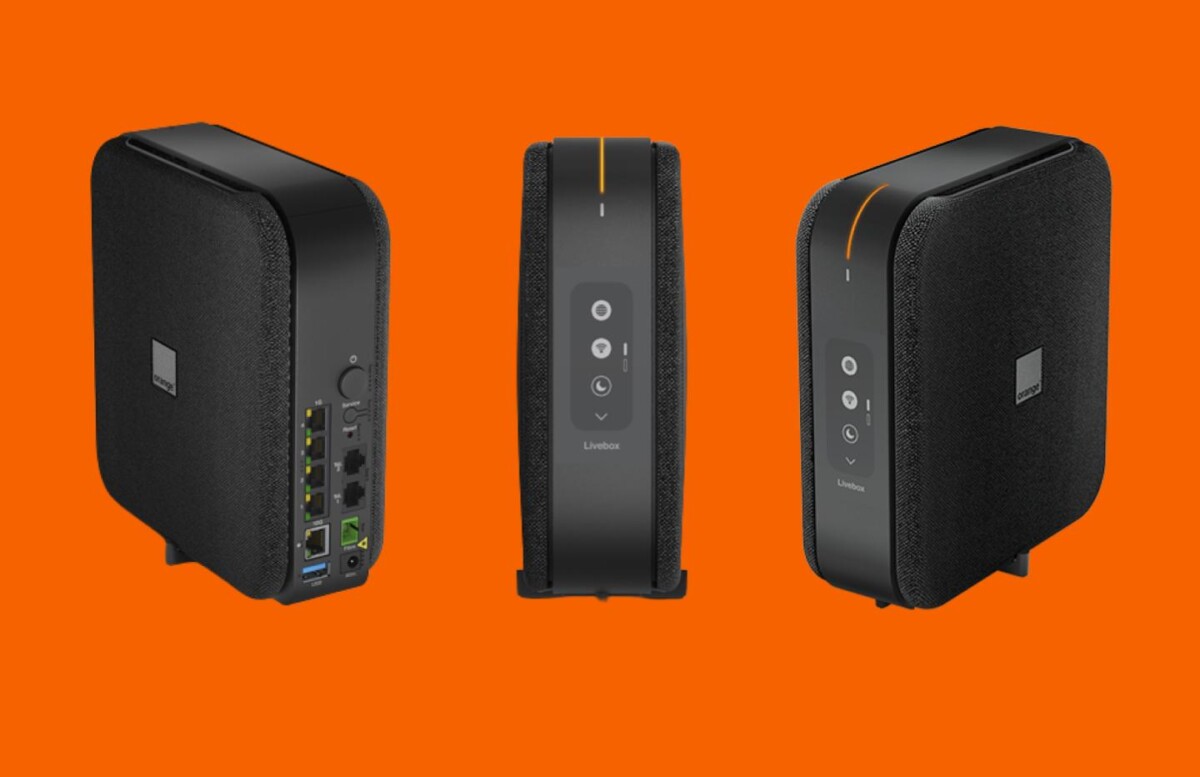
Livebox 7 network connections
This is certainly the biggest innovation of the Livebox 7 compared to the previous one: the addition of an XGS-PON port. This finally marks the arrival of this fiber technology at Orange, well after its appearance among the competition, notably at Free and at SFR with respectively the Freebox Delta (in 10G-EPON to be precise) and the SFR Box 8X.
Thanks to this new port (named 10G on the box), the Livebox 7 is capable of delivering a theoretical speed of up to 8 Gb/s in download speed (download) although the operator limits this speed to 5 Gb/s. s for individual customers. Your home will therefore need to be XGS-PON eligible and you will need to have a Category 7 or 8 network cable to benefit from it. Apart from this addition, the connectivity remains exactly the same with the presence of four 1 Gb/s ports, two RJ11 ports and 1 USB 3 port.

Livebox 7 does not rhyme with Wi-Fi 7
We should have expected this to the point of logically not seeing it as a form of disappointment, but the absence of the new generation of Wi-Fi network, Wi-Fi 7 (802.11 be) is still worth noting. We will therefore have to wait for the next generation of Livebox to undoubtedly be entitled to it, its deployment being scheduled for 2024.
In the meantime, the Livebox 7 has the same network as its big sister, namely Wi-Fi 6E, which is already excellent. Remember that the latter offers a frequency band of up to 6 GHz with a theoretical maximum data rate of 9.6 Gb/s. The difference with classic Wi-Fi 6 lies in this first data, the 6 GHz band making it possible to transport more data over a short distance, and therefore obtain higher wireless speeds.
Up to 3 optional Wi-Fi repeaters
The Orange operator offers the possibility of installing up to three repeaters on your network and they are available on request with the Livebox Max Up offer delivered with the Livebox 7. Note that you will still have to pay the sum of 10 euros to activate each repeater.
The repeater is quite bulky and almost looks like a box. It is Wi-Fi 6 compatible (Not Wi-Fi 6E).
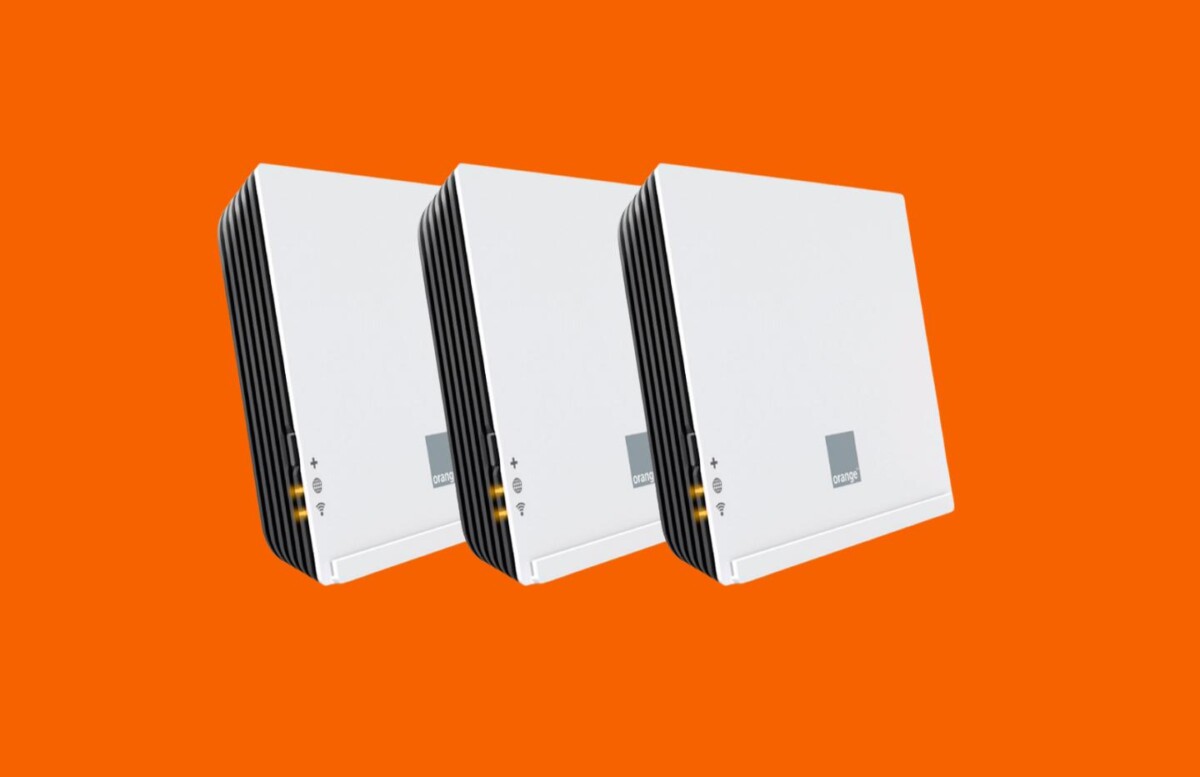
The same TV decoder for 3 years
Despite an aesthetic upgrade carried out in 2020, Orange has not changed its TV box since the last generation dating from 2016 and already supplied with the Livebox 4. The Livebox 7 therefore works in concert with the venerable UHD 4K TV decoder which is not provided directly with the Livebox Max Up offer. You will need to request it from Orange and its activation costs 40 euros. It is also possible to have up to two at home.
From a strictly technical point of view, this UHD TV decoder is a bit behind the times. It embeds a CPU processor quad-core Broadcom 7268 clocked at 1.5 GHz and coupled with 2 GB of RAM. It still has the advantage of being able to connect wirelessly to a Livebox via a Wi-Fi 5 (802.11 ac) connection at 2.4 or 5 GHz. The chip allows 4K UHD display (3840 x 2160 pixels), HEVC (H.265) decoding and supports HDR, as well as Dolby Atmos sound.
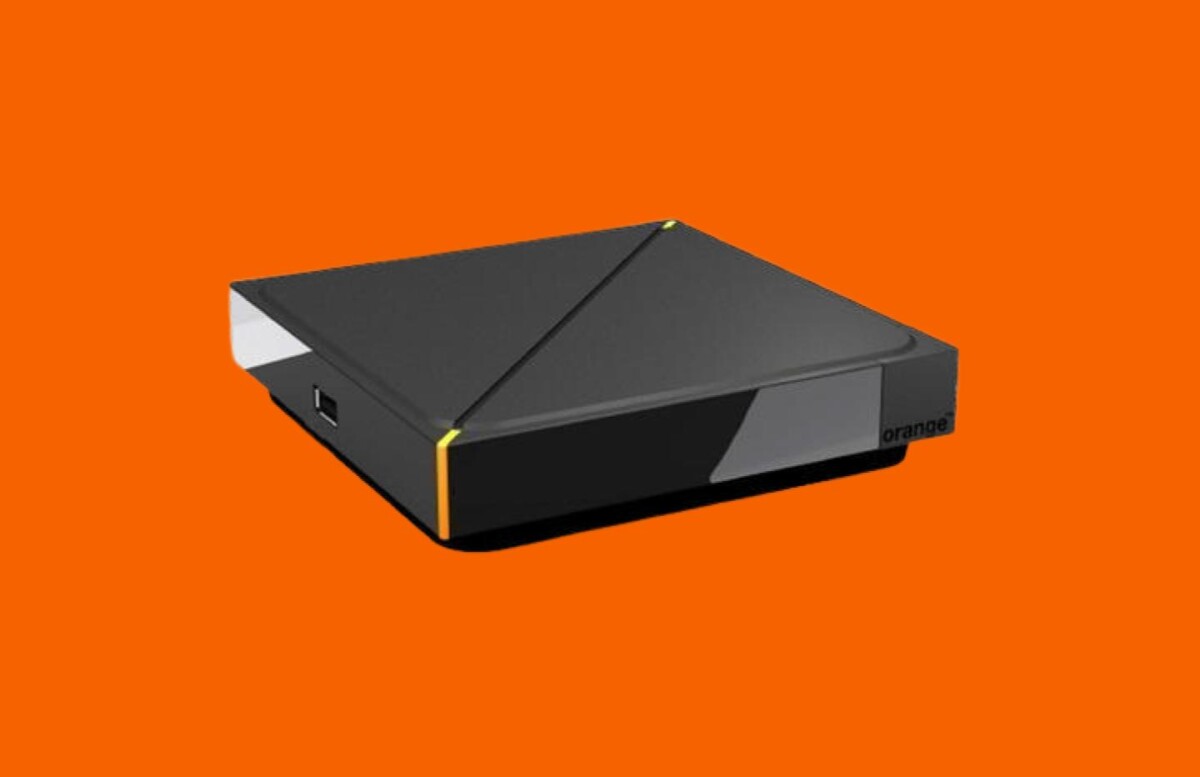
In terms of connectivity, this box is equipped with a USB 3.0 type-C port, a USB 2.0 port on the front, a Gigabit Ethernet port, a digital audio output and an HDMI 2.0. The remote control is synchronized using Bluetooth 4.0 and it is also possible to connect compatible devices, even if their use is limited. It is also the same remote control as on the first version of the decoder; it has not evolved since 2016 apart from the integration of a microphone to access content by voice, all managed by Alexa.
Note that although it is possible to record up to 100 hours of program, this model does not have physical storage via a hard drive, but storage in cloud working in the same way. The advantage is being able to view recorded content from a smartphone or tablet without your box being permanently connected.
Livebox 7 administrator interface: nothing new on the horizon
The control interface of the Livebox 7 is exactly the same as with the other models (Livebox 4, 5 and 6). To access it, simply launch your usual internet browser, then choose:
- Use the following address: http://livebox/
- Enter the following IP address in the search bar: 192.168.1.1
Once the identifiers have been entered, you have access to a menu in the form of windows with different options to activate or not, such as network options (configure dynamic DNS, change Wi-Fi identifiers, etc.), but also more options. specific such as connected home management and scheduling of box standbys.
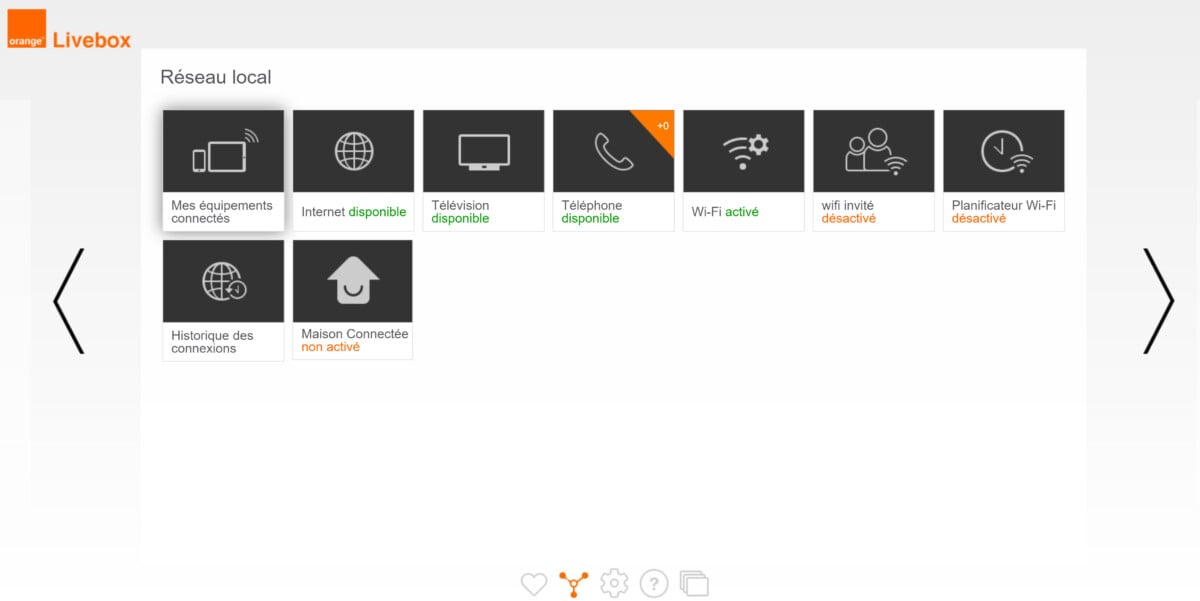
Also note that this entire interface is accessible from the My Livebox application available on iOS and Android and that it is possible to administer your box remotely via this solution.
Is it worth upgrading to Livebox 7?
With the Livebox 7, Orange is content to catch up with its competitors in the high-end internet box sector. It is opposite the Freebox Delta, the SFR Box 8x and the Bbox Ultim (with the speed+ option). The only advantage of this box compared to the Livebox 6 is therefore the flow. A slightly small difference to push for change, especially since the entry ticket is quite expensive: €39.99 per month for 6 months, then 57.99 euros per month.
Moreover, if this increase in speed is the only advantage of this offer and you are eligible for it, we advise you to look at what Free offers with its Freebox Delta offer and SFR with its SFR Fiber Premium offer which, for similar prices, increase speeds up to 8 Gb/s. The options offered are certainly useful, but Orange persists, for example, in offering its TV box only on request, while other operators integrate them directly into the box without activation billing.
With Livebox 7, we are ultimately dealing more with a sort of technical update than with a real intention to shake up the market. This will surely satisfy people wishing to move up a gear, but the investment required frankly requires reflection.

Fibre
Série Spéciale Rentrée Bbox
Dernier jour !
Débit jusqu’à 1 Gb/s
180 chaînes de TV incluses
Téléphonie vers 119 destinations

Fibre, Câble
RED box Fibre
Débit jusqu’à 500 Mb/s
Sans Player TV
Téléphonie vers 100 destinations

Fiber, Cable
SFR Fiber Starter
Flow up to 1 Gbps
160 TV channels included
Telephony to 1 destinations
All internet boxes
